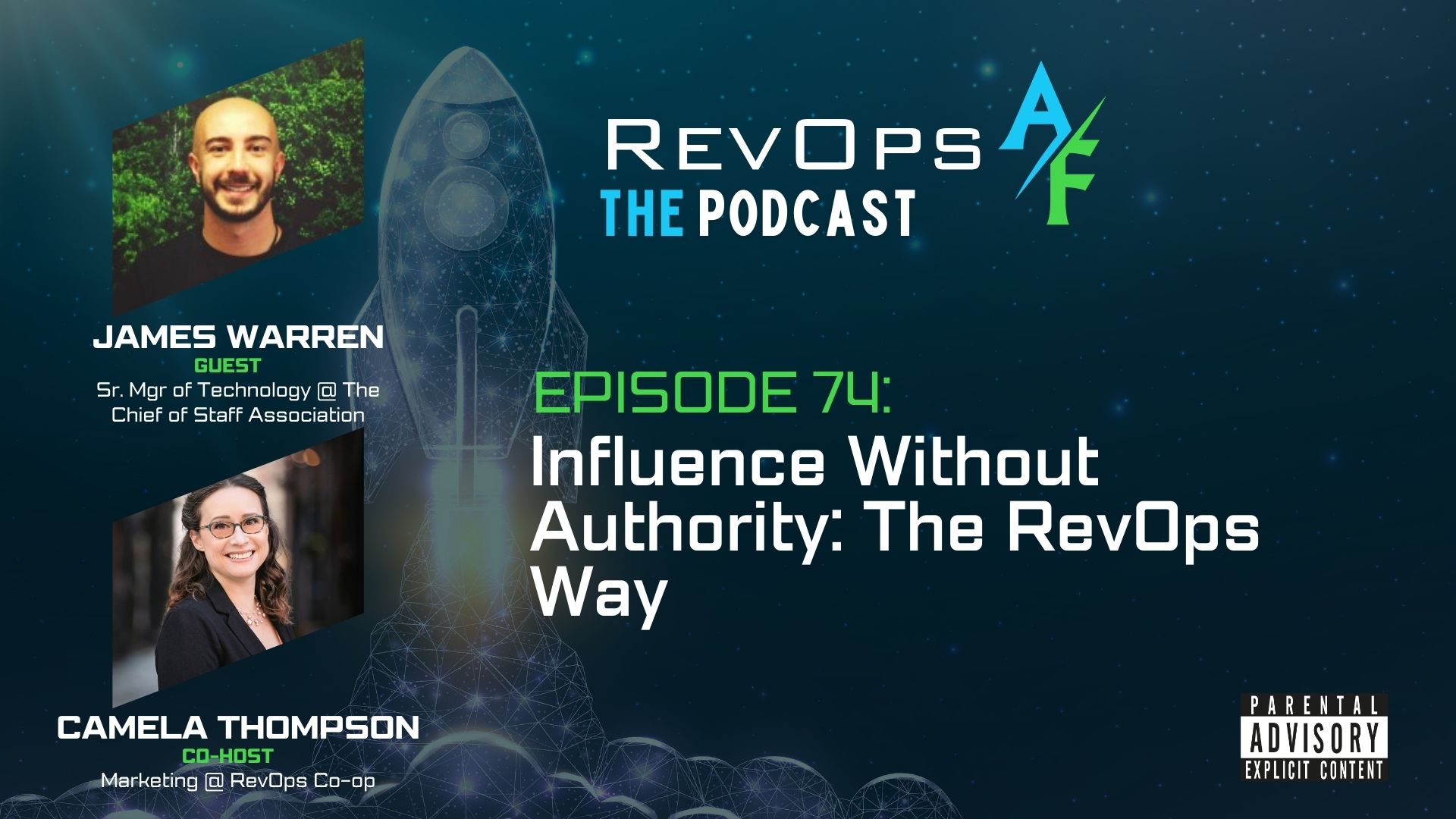
Episode 74: Influence Without Authority: The RevOps Way
Build RevOps influence without authority. James Warren shares strategies for stakeholder buy-in, agile methods, and going from reactive to strategic.
Today’s episode is brought to you by Aligned, your deal room for buyer clarity and forecast confidence. Try Aligned for free today.
In this episode of the RevOpsAF podcast, Matthew Volm, CEO & Founder of RevOps Co-op, sits down with Benjamin Zeitz, Head of RevOps at Sweep, to dig into the gritty reality of scaling revenue systems and processes in high-growth environments.
If you’ve ever had to rip out something you painstakingly built six months ago because the company outgrew it—or worse—roll back a failed launch in the middle of the workday—you’ll feel seen. Benjamin walks through his path from “accidental admin” to leading RevOps at a company building AI-powered Salesforce and HubSpot automation tools for other operators. Along the way, he shares why processes inevitably break, how to future-proof without slowing your team down, and non-negotiables for smooth rollouts (including how to avoid spamming your finance team into oblivion).
Like many in RevOps, Benjamin didn’t set out to become an operations leader. His first role at Founder Shield was as an SDR, where he noticed one of the co-founders spending a lot of time in Salesforce.
“I told him, ‘You’ve got more important things to do.’ He said, ‘You’re right—it’s yours now.’”
Thrown into the deep end without formal training, Benjamin automated away 90% of his SDR work. Lacking modern sequencing tools, he pieced together workflows from scratch, using creativity to replace what today would be solved with off-the-shelf tech.
From there, he joined a bootstrapped startup, scaling it 5x in three years. His next leap—a cybersecurity company where he was the first Ops hire—was a crash course in hypergrowth RevOps. The team grew from 20 to 400 people in 2.5 years, and his scope exploded from Salesforce admin to owning process design, data quality, and cross-functional scaling strategy.
“That’s where I learned that RevOps isn’t just systems—it’s process, systems, and data in constant motion.”
For the past four years, Benjamin has been at Sweep, a platform he describes as “an agentic workspace for Salesforce and HubSpot.” Sweep is built to help operators—no matter their technical skill—document, optimize, and scale their systems. Recently, they’ve leaned heavily into AI agents for:
The meta advantage? As a RevOps leader at a company building tools for RevOps, Benjamin gets to pressure-test best practices in his own org while shaping product direction based on real-world operator pain points.
The backbone of Benjamin’s scaling philosophy is the 1-3-10 rule, which he first encountered in Tools of Titans by Tim Ferriss:
“Processes break down in multiples of three and ten. What works for one person won’t work for three. What works for three won’t work for ten. The same is true at 30, 100, and beyond.”
This is true for the company as a whole and for individual teams. As your sales org grows from three to ten reps, your deal review process that worked fine last quarter will suddenly collapse. Multiply that across marketing, CS, and RevOps, and you’ve got a web of breaking points hitting all at once.
Benjamin frames this as the RevOps flywheel:
As milestones approach, RevOps should proactively talk to team leaders and ask three questions:
For details on how RevOps varies by companies depending on stage, check out our post RevOps Do’s and Don’ts By Company Stage.
One of the most common scaling traps is over-engineering for a future state while letting today’s pain points fester.
“If you have a problem today, you need to solve it today. A future-proof system that’s unusable now will have low adoption—and low adoption compounds problems.”
Benjamin’s playbook:
For more on process management, check out our guest blog post The Process of Building Process by Jeff Ignacio, who is also an instructor for several of our RevOps courses.
Sweep recently redefined its Stage 0 opportunities to weed out unqualified demo requests—think “Al Gore from Kleiner Perkins” booking a product demo.
While veterans understood the need, new hires hadn’t experienced the pain and didn’t naturally follow the new process. This exposed a scaling truth: what works when you can verbally explain it to three people breaks when you onboard ten.
Fixing it required:
And that last point is crucial—Benjamin emphasizes that every process change must be evaluated for data impact:
“If you redefine ‘demo scheduled,’ your scheduled-to-held conversion rate changes overnight. Know how that affects reporting, meetings, and your executive narrative.”
For more information on how to scale your RevOps function, check out this prior digital event around Best Practices for Scaling RevOps from Startup to IPO.
Benjamin’s early-career horror story—accidentally spamming an outsourced finance team with thousands of “Closed Won” alerts in 15 minutes—cemented a career-long obsession with rollback readiness.
His go-live checklist includes:
“You will make mistakes—plural. A good rollback plan turns an ‘oh no’ moment into a 15-minute hiccup instead of a business outage.”
When it comes to rollout and rollback communications, you should check out our post 9 Best Practices for Better Change Management.
If you’re stepping into a new RevOps role at a high-growth company:
Benjamin’s RevOps career proves that success isn’t about building perfect systems—it’s about building systems that can be changed without burning everything down.
Looking for more great content? Check out our blog, join our community and subscribe to our YouTube Channel for more insights.
Our average member has more than 5 years of RevOps experience. That means you’ll have real-time access to seasoned professionals. All we ask is that you’re generous with your knowledge in return.